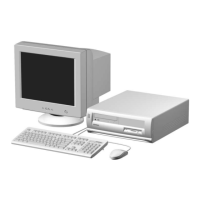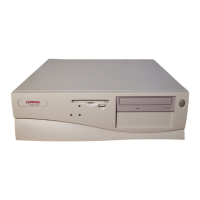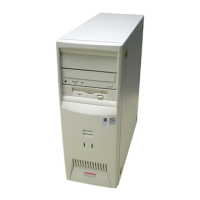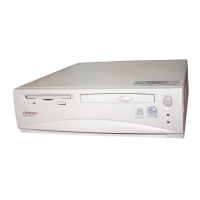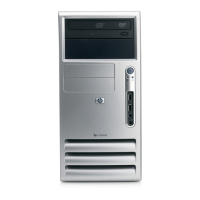Technical Reference Guide
Compaq Deskpro 4000 and 6000 Personal Computers
featuring the Pentium II Processor
First Edition -October 1997
5-1
Chapter 5
INPUT/OUTPUT INTERFACES
5.
Chapter 5 INPUT/OUTPUT INTERFACES
5.1
INTRODUCTION
This chapter describes the system’s interfaces that provide input and output (I/O) porting of data
and specifically discusses interfaces that are controlled through I/O-mapped registers. The I/O
interfaces are integrated functions of the support chipset and the 87307 I/O controller. The
following I/O interfaces are covered in this chapter:
♦ Enhanced IDE (EIDE) interface (5.2) page 5-1
♦ Diskette drive interface (5.3) page 5-9
♦ Serial interfaces (5.4) page 5-14
♦ Parallel interface (5.5) page 5-21
♦ Keyboard/pointing device interface (5.6) page 5-29
♦ Ethernet interface (5.7) page 5-35
♦ Universal serial bus interface (5.8) page 5-37
♦ SCSI interface (5.9) page 5-39
5.2
ENHANCED IDE INTERFACE
The enhanced IDE (EIDE) interface consists of primary and secondary controllers (integrated
into the south bridge component) that can support IDE devices each. Devices that may connect to
the IDE interface include hard drives, CD-ROM drives, power (writeable CD-ROM) drives, and
120-MB floptical drives.
Two 40-pin keyed IDE data connectors (one for each controller) are provided on the system
board. Each connector can support two devices and can be configured independently for PIO
modes 1-4, DMA modes 1-2, or Ultra DMA modes 0-2. In standard configurations with an IDE
drive the hard drive is attached to the primary connector and the CD-ROM (if installed) is
attached to the secondary connector.
NOTE:
Both controllers support UATA mode 2 (33 MB/s). If a second drive is to be
operated in UATA mode 2 off the same controller the standard 40-conductor cable must
be replaced with an 80-conductor cable (available as an option) is required. Running two
drives in UATA mode 2 with the standard 40-conductor cable produces CRC errors (due
to electrical crosstalk) that will cause the BIOS to switch to UATA mode 1 (25 MB/s).
5.2.1
IDE PROGRAMMING
The IDE interface is configured as a PCI device and controlled through standard I/O mapped
registers.
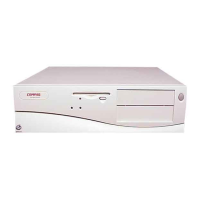
